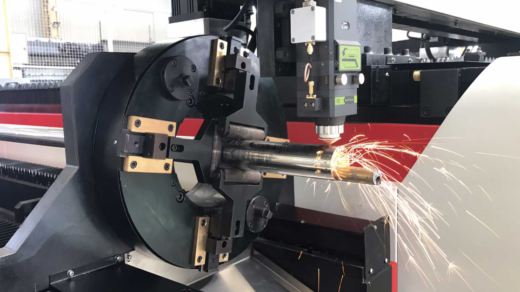The need for nitrile gloves—along with continuous advancements in their functionality—guarantees that they will continue to be a vital component in protecting employees, patients, and researchers as industries change and encounter new health, safety, and environmental issues. In many industries, gloves will remain the best option for safety and effectiveness, and their development will probably continue to influence the protective gear market. The blog that follows aims to identify the several advantages that make gloves the go-to choice in a variety of professional contexts.
Nitrile Gloves’ Protective Barrier and Chemical Resistance
Any protective glove’s resistance to a variety of substances is an essential feature. Excellent resistance to oils, solvents, and a wide range of dangerous chemicals that might jeopardise the integrity of the skin is what makes gloves stand out in this regard. The possibility of coming into contact with harmful chemicals is always there in both industrial and medical contexts, thus gloves must serve as a dependable barrier against these possible risks.
When handling certain pharmaceuticals or in industrial settings, gloves provide a protective barrier that is resistant to both chemical and physical deterioration brought on by oils and fats. This feature makes sure that gloves stay protected even under the most extreme circumstances, avoiding the spread of dangerous substances to the skin and lowering the risk of allergic responses or other health issues brought on by chemical exposure. In many sectors where chemical exposure is an inevitable concern, nitrile is the material of choice due to its flexibility in protection.
Fit and Comfort: The Ideal Mix of Usability and Protection
It’s often believed that one can only really feel comfortable when they seem to be wearing nothing at all. Despite being made for the highest level of safety, gloves manage to combine protection and comfort in a remarkable way. In addition to being flexible and sturdy and long-lasting, the material itself gives wearers an exceptionally tight fit. This means that gloves give the best protection and the tactile sensitivity required for accuracy, whether a surgeon is carrying out a delicate treatment, a researcher is analysing a sample, or a manufacturing worker is putting together complex gear.
Nitrile’s natural flexibility also makes it possible to use it for longer periods of time without sacrificing comfort, which is crucial in high-stress settings like labs or hospitals where people may be wearing gloves for lengthy periods of time. Nitrile keeps its form and fit unlike other materials that might become stiff or constrictive after extended usage, avoiding the weariness and pain that could result from tight or ill-fitting gloves. Nitrile gloves are the go-to option for those with sensitive skin because of its smooth inside, which also improves user experience by lowering the risk of allergic responses and skin irritation.
Standards for Health and Safety: Fulfilling the Highest Demands
Gloves must fulfil strict safety and health requirements in order to be deemed functional. The highest industrial requirements are met by gloves since they are produced according to strict specifications, unlike their rivals. The gloves must ensure that no contamination happens while handling in addition to providing physical protection, whether in a medical facility or a research lab. In crucial medical and scientific settings where contamination might have dire repercussions, nitrile is often preferred because to its non-porous character, which guarantees that it will always be a dependable barrier.
The hypoallergenic nature of gloves is another important safety advantage. In delicate settings like hospitals, where direct contact with allergens may cause serious responses, latex allergies have grown to be a serious problem. This danger is eliminated by the synthetic composition of gloves, allowing both patients and medical personnel to operate with confidence. Since gloves are built with such high safety standards, they promote patient trust and staff well-being.
The Effect on the Environment: Sustainability and Nitrile Gloves
Sustainability is becoming a top priority in every industry in today’s more environmentally concerned society. Single-use gloves’ manufacture and disposal, especially in sectors like healthcare, greatly adds to the world’s trash. Despite being a synthetic material, gloves have made progress in resolving this issue.
In an effort to lessen their carbon impact, a number of firms have started making gloves using eco-friendly materials or recycling programmes. Furthermore, gloves may endure extended usage before having to be changed since they are sometimes thought to be more robust than latex or vinyl. This extended lifetime contributes to a more sustainable approach to glove use by lowering the total amount of trash produced. Despite the fact that gloves are not completely biodegradable, these advancements show that the sector is becoming more environmentally sensitive and coordinating with larger initiatives to lessen environmental damage.
Conclusion:
From their exceptional durability and chemical resistance to their hypoallergenic nature and comfort, nitrile gloves‘ many advantages solidify their position as the best option in industrial, medical, and laboratory contexts. Strong, comfortable, and safe protective gear is becoming more and more in demand as industries change and encounter new difficulties. Because they provide workers and professionals with the protection they need in a world that is always changing, gloves continue to be an essential tool in this regard.
It is evident from knowing the many benefits of gloves why they are not just a viable alternative but the best solution for anybody looking for increased performance, safety, and peace of mind in dangerous situations.



